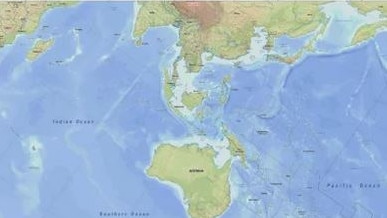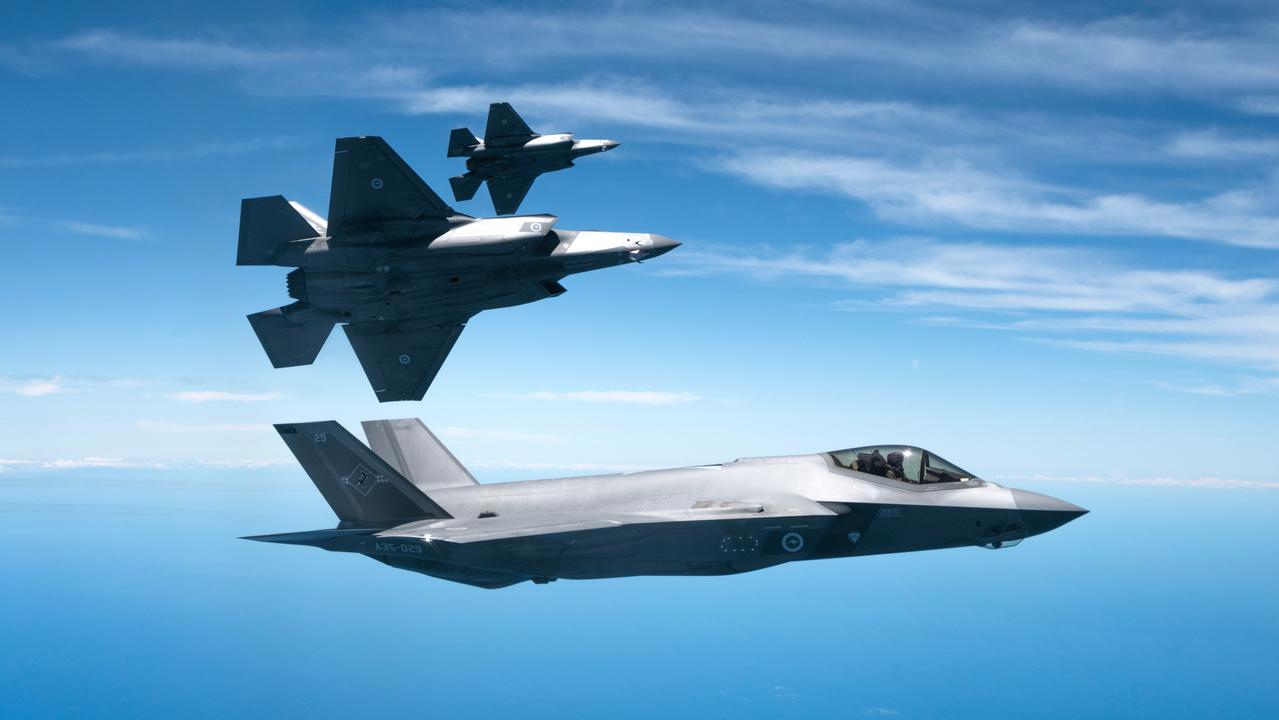Western Australia is the AUKUS state
Australia sits between the choke points of the Indian Ocean and the Pacific. But the tilt of this map effectively makes the whole of Western Australia our frontline.

The most enlightening map in the 2023 Defence Strategic Review (DSR) appears on page 27. It’s a projection of our region of strategic interest and illustrates our geography as it really is. I wish I had had it when I was defence minister. In the 1980s we operated off the RAAF’s strategic planning map – a projection of the northern approaches to the Australian continent with a series of concentric circles emanating from the focal point, Darwin.
I am reminded of the statement by the philosopher Friedrich Nietzsche: if you stare into the abyss long enough it will stare back into you. If you stare into this map long enough, the lines of required effort in the defence of our continent stares back at us. It elevates our significance. We lie athwart the choke points between the Indian Ocean and the Pacific. We have a huge domain that shouts out our capacity for dispersal. The tilt of this map effectively makes the whole of Western Australia our frontline.
Four decades ago my late friend Des Ball wrote a book on the joint facilities entitled A Suitable Piece of Real Estate. He saw our significance to the US in the then Cold War context as a southern vantage point for most facets of the evolving US strategic deterrent. Though continually evolving their technology, the US still finds the joint facilities so. But now there is an added dimension.
During the Cold War our geography was useful for the strategic balance, but no other component of the strategic picture. Now we are at the centre of their principal strategic focus. That has been so since the presidency of Barack Obama. The rebalance to the Indo-Pacific is now cemented in the American strategic mind.
The American opinion is not simply driven by kindness to allies. This is about hard-headed military interest – ours and theirs. We need to get out of the habit of our focus on shared values. While they are there, we all know we have very different constitutional arrangements, and values won’t always be identical.
Hard military interests are another matter. They need to be separated out from what might be challengeable on the values front, particularly if Donald Trump is re-elected as US president. The DSR map tells us that if the US remains committed to the defence of the Western Pacific, our geography is critical. The US has a range of allies and friends in our zone. We are potentially the last bastion.
The US is not waiting around for the arrival of our AUKUS submarines. I am confident I will be dead when the first of those arrives. But, with our ability to provide facilities for submarine, air and missile deployments, we will remain vital. Above all our capacity for dispersal, if effectively pursued, will provide a continuation of our status as a “suitable piece of real estate”.
That is an effective contribution to our deterrence as well as that of our close allies.
Capabilities and intentions are different phenomena. Our diplomacy must be devoted to sustaining friendships. But important to that effort is the appearance and reality of the fact we have a powerful ally. It is a vital component underpinning that diplomacy should evolving capabilities, at some point, confront changing intentions and views of us. AUKUS is not a defence alliance, but both pillars – one and two – are vital in reinforcing ANZUS.
Two elements require urgent attention. They are for pillar one, the rapid development of HMAS Stirling (the RAN’s main base in WA) and the nearby Henderson naval construction and maintenance facility. For pillar two, it is leveraging our status as a world-class mining and, potentially, minerals processing nation for rare earths. Many other elements of our posture, not least the northern airbases at Learmonth and Curtin, are vital, but getting these two right is crucial.
Stirling/Henderson requires immediate and urgent attention. HMAS Stirling recently hosted a visit by an American submarine tender, the USS Frank Cable. Frequent such visits are useful. They should help keep us abreast of America’s needs. Within three years the US and UK rotational submarine deployments to WA will commence. What is being done now requires high security. We don’t know how well it is proceeding.
What hasn’t proceeded fast enough is the land acquisition and building of accommodation in Rockingham of at least 300 houses necessary to support planned US and UK submarine rotations. Defence Personnel Minister Matt Keogh’s announcement earlier this month regarding construction of relevant defence housing in Rockingham will help settle frustrated minds. This development must quickly expand for the additional work force required to construct the general purpose frigates and other naval programs.
Henderson is nowhere near where it should be for all the planned developments involving the RAN and its naval partners. It needs security upgrades and dry-docking facilities.
The question of ownership of the various facilities required for shipbuilding and sustainment needs resolution. When we built the Anzac frigates we were assisted by the creation of a joint venture for the vessels’ construction. That was AMECON, which first built two American-designed FFGs and then constructed the Anzac class. The latter were produced on time and under budget – still our best performance in naval shipbuilding.
A joint venture is essential now. Austal does not have any guarantees for the planned general purpose frigate, but it does have the contract to build to Birdon’s design a total of 18 amphibious land craft (LC-Ms) for the Army. A joint venture for the facilities and subsequent builds would include at least Austal, BAE, Birdon and CIVMEC, which actually owns the main building at Henderson. Birdon might seem an unusual partner, but its executive chairman, John White, supervised the construction of the Anzac-class frigates, and has done it all before.
The government should insist on a joint venture being rapidly formed. The winner of the forthcoming general purpose frigate tender could join the joint venture when that deliberation is concluded. (Disclosure: I am a member of the Australian board of Luerssen – the company building the offshore patrol vessels [OPVs] in CIVMEC’s building.)
The second pillar – and I think it should be third pillar for its significance – would be the capacity in WA to mine and process rare earths for magnets vital to addressing a major American strategic weakness. Rare earths are crucial to some 3400 American weapons systems. China already has a complete mine-to-missiles production process.
WA has two companies capable of challenging Chinese dominance. One is Lynas. Strongly supported by the Japanese, it has survived repeated efforts by the Chinese to shut it down. Lynas’s mine is at Mt Weld. It was selected by the US to construct a heavy rare earth processing facility in Texas. To assist the process, it is building such a facility in Malaysia. It has a processing facility constructed in Kalgoorlie, but that is for light rare earths.
It is deeply aware of how vital this is to the US.
A second is Iluka. Its processing facility is at Eneabba, 280km north of Perth. It has received government support, but it needs more. The federal government is providing useful tax concessions for critical minerals, but additional help is needed to underpin efforts with offtake agreements and stockpiling. In the northeast of WA, Northern Minerals is assessing a potential massive heavy rare earths deposit, which includes dysprosium and terbium, at Browns range near the Northern Territory border. The federal government is alert to this and is trying to compel (much resisted by Beijing) a selldown of Chinese interests in the project.
The global trade in these rare earths is about $US2bn ($2.9bn), but they support $US7 trillion of global manufacturing. That manufacturing scoops up not just weapons production but also new technologies critical for addressing climate change.
We are ethical miners. Many across the globe are not. Our miners and processors, assisted by organisations such as ANSTO and CSIRO, know how to do this sustainably. Iluka managing director Tom O’Leary says that its potential production of dysprosium and terbium (critical for the magnets for weapons systems and much else) has the capacity to account for “greater than half of 2030 forecast Western demand”. Combine that with Lynas and we can probably account for the lot.
This would be a great outcome for AUKUS and for WA – the AUKUS state.
-
Kim Beazley was Australia’s defence minister from 1984-1990 and the governor of WA from 2018-2022.


